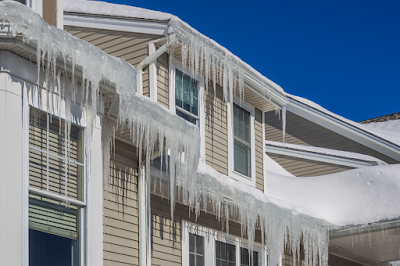We’re heading into the home stretch of winter! There’s probably only a few more big snow falls in our future, which means it’s time to start planning for spring - which is probably the most fun home maintenance season.
However, one thing that often gets overlooked, with catastrophic results, is preparing for the spring thaw. Make sure your home is prepared with these tips for both inside and outside of your home to make sure you don’t have to spend thousands of dollars on repairing damage, or even worse, that your valuables get damaged by the water.
Here are 17 ways you can prep your home to ensure you aren’t the victim of water damage this spring:
Outside Your Home
- Get any remaining snow away from your house.
- Check property for anything that’s preventing the melting snow from draining away from your house and make sure there is a clear path for it to follow.
- Make sure your eaves and downspouts are in good shape and don’t need any repairs. Get them cleaned!
- Make sure there is proper grading around your home so that water runs away from your home, not towards it.
- Clear out the window wells - remove any dirt, leaves, and other debris - you can also install window well covers.
- Check your foundation for cracks.
- Check on shingles, chimneys, air vents, and flashing to make sure nothing is damaged from the snow.
- Repair any sidewalks, patios, decks, and driveways that may have places where water can pool near your house.
- Catch run off with a rain barrel.
- Head out onto the street and find your nearest storm drains - make sure they are all clear of debris.
Inside Your Home
- Just in case, move any valuable belongings out of the basement, place valuables into plastic seal-able bins or make sure that everything is at least 1 foot off the floor.
- Check on the floor drains in your basement - make sure they are unobstructed and working properly.
- If you live in an area that is susceptible to sewer backups then make sure you have a back-flow valve installed.
- Protect your furnace - get it raised at least 12” off the ground.
- Install leak sensors.
- Seal any cracks in your basement windows.
- Minimize home water use when there are large storms.
Spring home maintenance is very important. It's the time of year that you'll catch little, but important items that could cost you thousands down the road. If you want a professional home maintenance inspection done on your home - Call Inspect it All! We offer a full Home Maintenance Inspection and provide you with a detailed report. Peace of mind is invaluable.



Comments
Post a Comment